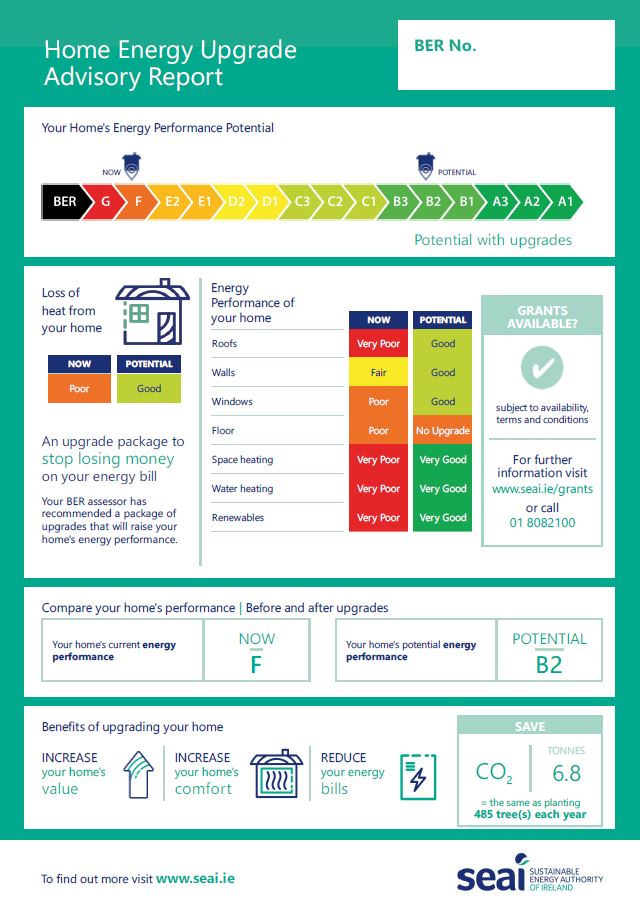In this article we cover:
- What the new grants are and who’s elegible
- What you need to apply
- How much you can get for your upgrade
- Where to get more information
Renovators can now get a 35 per cent grant to upgrade their windows and doors from the Sustainable Energy Authority of Ireland (SEAI) but they need to upgrade the energy efficiency of their entire home to get it, Selfbuild has learned.
A mixture of climate ambitions and EU directives have left the ROI government in a scramble to upgrade the energy efficiency of a third of Ireland’s housing stock within a decade.
The target: upgrade the energy efficiency of entire homes, in what’s referred to as deep retrofits.
In total, the ROI government plans to upgrade a third of the housing stock by 2030. And to get you to invest, the SEAI has set up the National Home Retrofit Scheme which offers a 35 per cent grant for eligible works.
The grant will go towards upgrading the entire house to a B2 Building Energy Rating, mostly thanks to insulation and airtightness upgrades, but a spokesperson for the SEAI confirmed grants for windows and doors were also eligible under this scheme.
The government’s grant system up to now has mostly focused on shallow retrofit measures, i.e. small improvements in energy efficiency such as insulating your attic, leaving other paths for heat to escape. These one-off grants continue to be available under the Better Energy Homes scheme.
In practice, a deep retrofit tends to consist of much more intrusive work than a shallow retrofit and the costs are much higher too.
UPDATE May 2022: Update on how to apply available here and in the podcast below:
How to apply
The National Home Retrofit Scheme is a one stop shop (OSS) initiative, with an application process that looks a lot like the defunct deep retrofit grant.
The new retrofit scheme is being administered through One Stop Shop providers, which are contractors who register with the SEAI and commit to the scheme’s code of practice, much like the current list of contractors for the Better Energy Homes scheme.
To apply for a deep retrofit grant, therefore, you need to contact one of the pre-approved contractors or energy agencies who are currently registered.
They will take care of everything, from assessing the house to design, installation, commissioning (checking the systems), and walking you through how the systems will work once the renovation is all complete.
However, the SEAI told Selfbuild there are also registered contractors listed on the website for homeowners who wish to self-manage their upgrade project and engage the local contractor directly.
“We are currently developing a registration process for One Stop Shops which will be launched later in the year,” a spokesperson for the SEAI said. “We anticipate that many of those on the list will apply to become registered One Stop Shops.”
Action Plan
The aim of the deep retrofits is to significantly upgrade the energy efficiency of existing homes, to such a high level that a heat pump can work to maximum capacity.
Heat pumps are heating systems that are highly efficient at converting electricity into heat and hot water, but require the home to be very energy efficient in the first place, i.e. well insulated and airtight, to deliver significant savings.
The Climate Action Plan commits to installing 400,000 heat pumps in existing homes by 2030, in the context of upgrading 500,000 homes to a Building Energy Rating of B2 within the same timeframe, the equivalent of roughly a third of the total housing stock.
This means that there will be 50 times more heat pumps installations by 2025 than there were in 2019.
The publication of the National Standards Authority of Ireland’s heat pump code of practice, which is the last in a series of practical plumbing and heating guides for installers, should assist in this roll out.
The NSAI also published a code of practice for retrofits back in 2014, which was updated in 2019.
In 2019, roughly 2,000 homes upgraded their existing dwelling to a B2 building energy rating – the plan is for this to leap to 34,000 in 2022, and then set a pace of roughly 55,000 upgrades a year form 2023 to 2030.
These targets were presented by Robert Deegan, Residential Energy Efficiency Division in the Department of Environment, Climate & Communication, at the SEAI 2021 Energy Show.
New advisory report
As part of your Building Energy Rating report, the written advisory portion will suggest what upgrades you could make to get the house be more energy efficient.
A new format for the advisory report has just been released; it now includes graphics to simplify the message. Sample below.













